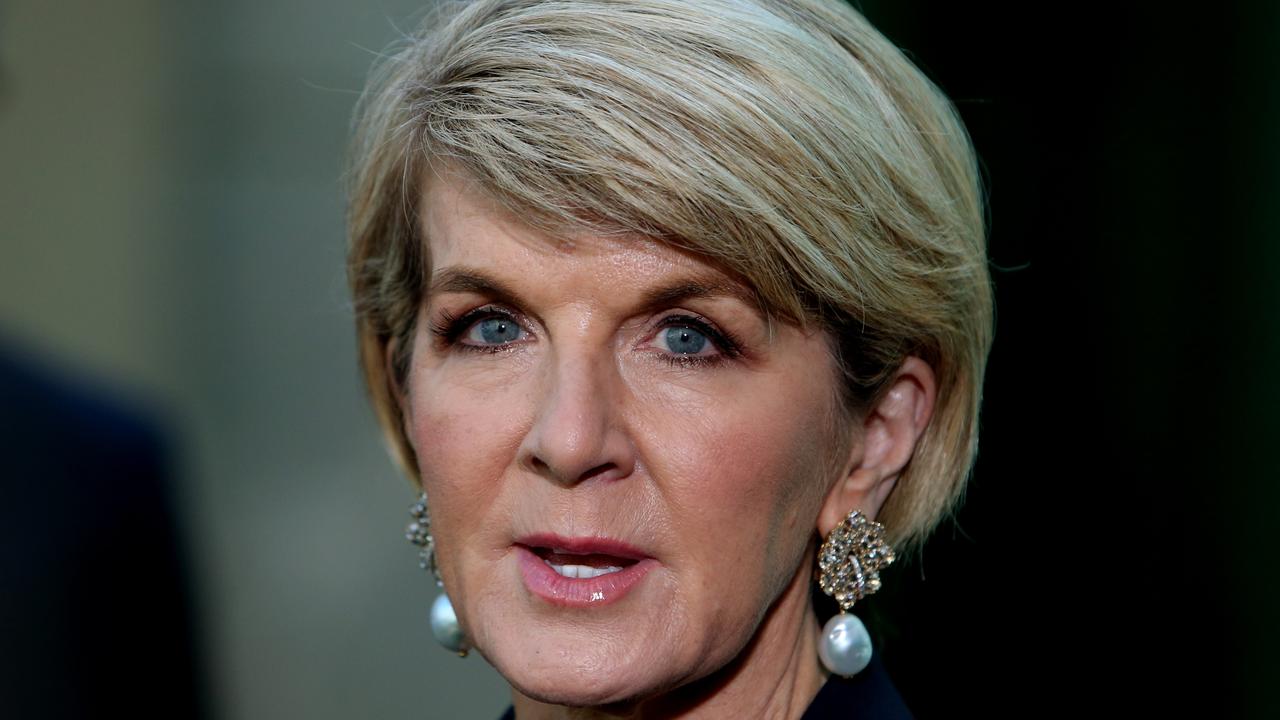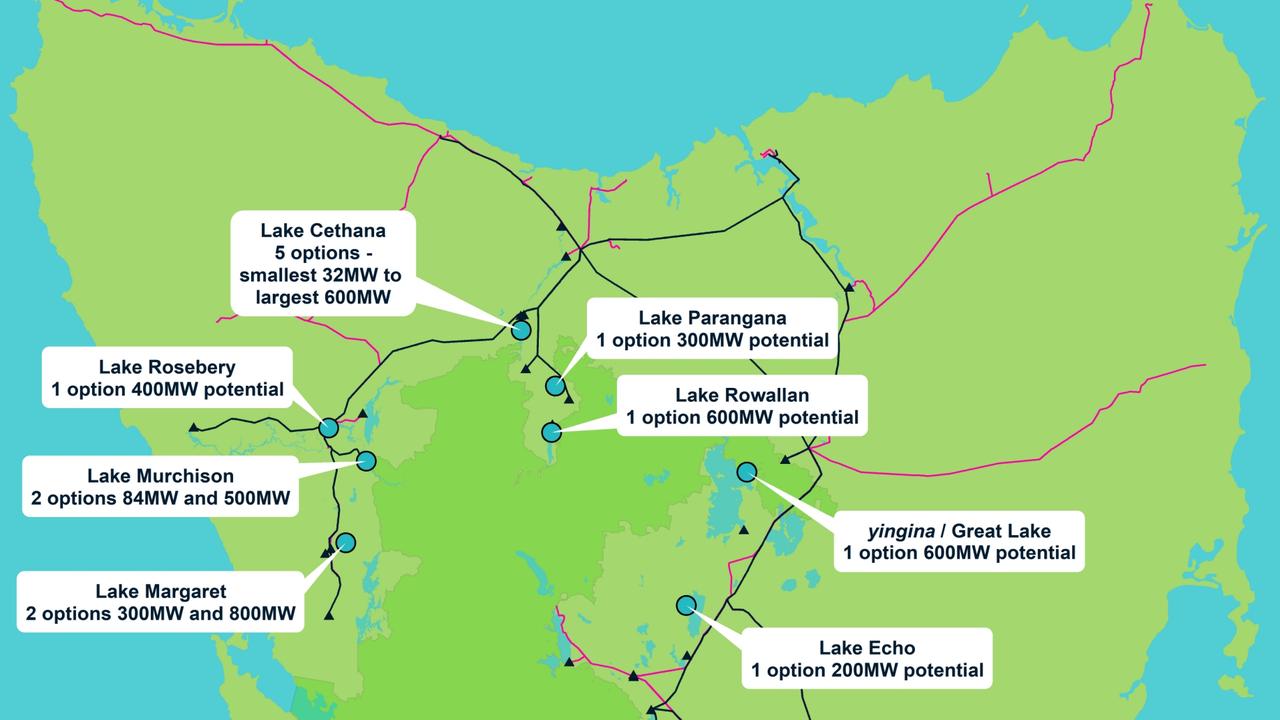Government urged to face policy ghosts of the past
There’s one issue that is threatening to bring down the government as voters look to Labor to fix the problem.
A federal election is looming and before the year ends the government will need to ensure the ghosts of Christmas past don’t come back to haunt the government in the new year.
Energy policy is the true miserable ghost of the coalition, the haunting mess that will not go away. It brought down Malcolm Turnbull, twice, and still divides the Liberal Party.
The Morrison Government might have hoped to avoid addressing climate change in energy policy after it scrapped the National Energy Guarantee developed by former prime minister Malcolm Turnbull, but pressure is building for change.
Today former foreign minister Julie Bishop called for a bipartisan approach to energy policy, so the industry can have certainty, although she downplayed suggestions she was calling for a resurrection of the NEG.
“I’m agnostic about the type of generating capacity but they need a framework for stability of an energy policy,” Ms Bishop said.
Her comments follow shock Victoria election results that saw swings away from the party in once-safe Liberal electorates and the bombshell resignation of Julia Banks.
Jobs Minister Kelly O’Dwyer said the Liberals were now being seen as “homophobic, anti-women, climate-change deniers”.
The government’s current approach to energy involves prioritising reducing household power costs, including by taking a “big stick” to energy companies through new divestiture laws.
Ms Bishop said reliability and affordability of energy is important but “this must and has to be balanced with concerns for our environment and preservation for our planet”.
Labor energy spokesman Mark Butler said it was not too late for Mr Morrison to get on board.

“We have two weeks of parliament set for the rest of the year. We are ready to start discussions this afternoon on finishing the work of the National Energy Guarantee,” Mr Butler told reporters in Canberra.
This week the United Nations Emissions Gap Report showed Australia was not on track to meet its Paris climate commitments.
Hundreds of students from more than 100 schools across Australia will be striking this week to demand action on climate change. Instead of going to school, the children will spend the day at their nearest parliament house or MP’s office.
Prime Minister Scott Morrison has slammed the protest, saying he did not support “schools being turned into parliaments”.
But Labor appears to be turning to renewable energy as a vote-winner.
Opposition Leader Bill Shorten is taking advantage of the coalition’s internal difficulties to ramp up his own energy policy, which he released last week.
“We will build the essential energy infrastructure to power industry and manufacturing,” he said. “We will help households genuinely cut their power bills with more renewables and more storage. And we will take real action on climate change.”
Right now, the coalition doesn’t have a clear policy to address any of those three problems.
Energy Minister Angus Taylor is working on the first one, hoping to have a shortlist of new power generation projects to support early next year — potentially including coal.
With less than 14 sitting days until the next federal election, the government does not have long to address this crucial issue.
Here’s where the major parties stand.
THE ‘BIG STICK’
The Morrison Government’s main focus is on bringing prices down and in October it announced plans for a default market price and to ban late payment penalties.
It has also promised to put forward legislation for what it calls the “big stick” to use on energy companies ripping consumers off. The more technical term for what it wants to do is “divestiture”.
The government hasn’t released it proposed laws yet but “divestiture” would generally allow the government to force the breakup of large energy companies. It was expected to introduce the laws to parliament this sitting fortnight.
Leaked documents show the proposed laws would enable the government to ask parliament to give the treasurer the authority to order energy companies to sell their assets as part of its strategy to bring down power prices.
They would allow Treasurer Josh Frydenberg to order the restructuring of power companies or the sale of their assets if it is deemed to be in the public interest, according to a draft of the bill seen by Fairfax Media.
The coalition asked for submissions on the draft bill, called the Treasury Laws Amendment (Electricity Price Monitoring) Bill 2018, ahead of parliament resuming this week.

NEG 2.0
Malcolm Turnbull got so close to seeing his national energy policy passed and the NEG (National Energy Guarantee) still seems to have some fans.
Labor leader Bill Shorten wants to resurrect the plan and has invited Prime Minister Scott Morrison to return to negotiations.
The NEG policy was supported by business and industry and Labor says it was the best possible solution to ending the energy crisis that emerged under the government.
But experts believe Labor’s move is also clever politically as there are hours of footage of Mr Morrison, Mr Turnbull, and Treasurer Josh Frydenberg saying how important the NEG is.
It will wedge the Liberals, many of whom still believe in the policy they developed and fought so hard to make work.
The NEG basically requires energy retailers, such as gas, solar and wind farm owners, to sign contracts agreeing to supply a minimum amount of energy that would be available at all times. This would help avoid blackouts, bring prices down and was also originally aimed at legislating a certain reduction in carbon emissions.
Mr Morrison will move forward will asking energy companies to guarantee a certain amount of demand but it won’t be related to any emissions reduction.
DIRECT INVESTMENT
The other problem governments face is ensuring new power assets are built to replace ageing power plants.
If Labor can’t come to an agreement with the coalition about the NEG, it will instead move to take “direct action to invest” for projects to replace ageing generators.
“That would look like a series of direct underwriting, I guess a coordination of underwriting and investment in the electricity market,” Labor’s shadow minister for climate change and energy Mark Butler said.
“Now you see this model in the UK, across Europe, in some states like Victoria and Queensland that’s been the approach as well.”
He said this could involve some type of open competitive auction.
Labor will double the Clean Energy Finance Corporation’s original capital, providing an extra $10 billion over five years for “value-for-money” projects. It will also spend $5 billion building new transmission lines that the energy market operator has recommended.
The coalition may also invest directly in new energy assets through its Underwriting New Generation Investments program, but it is considering coal projects as one possibility.
Submissions opened on 9 November on how the program should be structured. An expression of interest process will be open from December 2018 until January 2019.

NEW POWER STATIONS
The coalition doesn’t have an energy policy at the moment but before Mr Turnbull was dumped as prime minister there was a lot of jostling among its members about what the government should be doing.
Earlier this year, a group of coalition MPs calling itself the Monash Forum formed to lobby for the building of new coal-fired power stations. The group included former ministers Kevin Andrews, Eric Abetz and Tony Abbott.
The Australian reported that The Nationals were also demanding the construction of “a minimum of three” baseload power stations if Mr Turnbull wanted support for his NEG. Only coal, gas or traditional hydro projects, which could deliver 24/7 electricity, would be eligible for assistance under its plan.
When he was treasurer, Scott Morrison rejected calls for new high-efficiency low-emissions (HELE) coal generation plants and said prices for the electricity they generated would be twice as expensive as power from existing plants.
But Mr Abbott argued that new coal plants would still produce cheaper power than new gas plants and were more reliable than renewables.
A $5 billion fund was suggested to help extend the life of existing power plants or increase capacity, as well as to fund new baseload power stations.
But there’s always the problem of “sovereign risk" and this is where many plans fall down.
Basically, the uncertainty around action on climate change means its very risky to spend so much money on a project that would take years to build and could face restrictions to its operation in the future.
That’s why governments need to underwrite this risk somehow, for example by promising to cover losses example if new policies impact the project’s profit.
There have also been suggestions that new power stations could be funded by the government so if the projects lose money, it will be taxpayers who foot the bill.
In contrast, Labor said earlier this year it would not support new coal projects if they were included as part of the NEG and would not honour the commitment if it won the next election.
NEW TRANSMISSION LINES
Labor’s plan includes money for a second transmission line to Tasmania that would allow power produced in the state to be used on the mainland, potentially allowing it to act as the “battery of the nation” to meet peak demand.
Tasmania has identified 14 pumped hydro sites that if developed, could deliver 2500 megawatts of power, more than the Snowy Hydro 2.0 expansion.
Mr Shorten has promised $5 billion to modernise Australia’s transmission network, including the second Basslink cable.
“Communities are going to be generating much more of their own power in their own neighbourhood. We need a national grid and network that supports this,” he said.

SUBSIDY FOR BATTERIES
Labor will provide a $2000 subsidy for 100,000 batteries to be installed in households.
The Smart Energy Council estimates new household battery systems could help homes save more than 60 per cent on their power bills. They would also reduce peak demand in the electricity grid and improve the grid’s reliability.
But the batteries cost about $10,000 so households would still have to find about $8000 to pay for them.
Mr Morrison said the plan would fail like the home insulation scheme, which was cut short when four installers died.
“We have gone from pink batts to pink batteries. They never learn from their mistakes, the Labor Party,” Mr Morrison told reporters.
He said the “expensive subsidies” would be paid for by higher taxes and said families struggling to get by would not go out to buy a household battery, even with a subsidy.
CARBON EMISSIONS REDUCTION
Labor has a 45 per cent emissions reduction target and 50 per cent renewable energy target by 2030.
But it is a lot higher than the coalition’s target of 26 to 28 per cent on 2005 levels by 2030, which has been committed to as part of the Paris agreement.
In fact, Tony Abbott has argued for abandoning the Paris target in an opinion piece in The Australian saying it was the best way to keep electricity prices down and employment up.
The NEG was originally expected to legislate a target of 26 per cent for the next 10 years, with a review in 2025 and any changes to apply from 2030.
Even without the NEG, the pre-existing Renewable Energy Target (RET) will likely reduce emissions by 24 per cent within three years, so there will be hardly any extra reduction in emissions in the nine years between 2021 and 2030.
Mr Morrison said Labor’s policy was “five times worse than the carbon tax”.
But Labor is staking its next election campaign on the belief that people want action on climate change.



